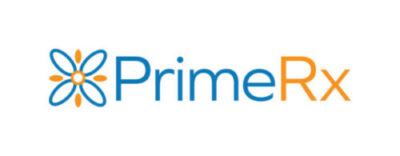“Real-Time Prescription Benefit” Visibility Means No More Surprises at the Pharmacy Counter
Last year, the Fresno Bee published a report highlighting the tragic situation of a local woman who had been unable to receive cancer medications prescribed by her oncologist. According to the report, the doctor wanted the patient to use medication that “didn’t follow the standard protocol sequence of medications,” as outlined in the patient’s pharmacy benefit manager’s (PBM) guidelines.
Sadly, as the article pointed out, this patient is one of thousands of documented cases of patients denied their medications for similar reasons. For this particular patient, each denial resulted in delays as the decision was challenged. In one instance, the patient was forced to wait nearly tow months before the drug was ultimately approved.
While this may seem like an extreme example, instances of patients leaving the pharmacy without their prescribed medications abound. Research done by DrFirst from 2018 found almost half of patients have abandoned a prescribed medication upon learning of its out-of-pocket costs. This in turn has added to the national crisis of medication non-adherence, with 2017 research by Truven Health Analytics-NPR finding nearly 70 percent of patients who failed to fill their prescriptions in the last 90 days reported cost as the reason.
Incidences of in-pharmacy medication abandonment are on track to become even more widespread, as more Americans switch to high-deductible health care plans, which carry higher deductibles and out-of-pocket costs.
Medication “sticker shock” is a frustrating, potentially dangerous experience for patients. It’s heartbreaking for pharmacists who have to deliver the unwelcome news that a medication is either too expensive or not covered. This negatively affects overall pharmacy efficiency, since pharmacists must spend additional time communicating with doctor’s offices and payers to identify an alternative course, and unclaimed medications must be returned to stock.
In the future, instances of patients being surprised at the pharmacy counter may be a thing of the past. In recent years, technology makers have come to the rescue with a solution referred to as “real-time prescription benefit (RTPB)” visibility which provides immediate access to details of each patient’s benefit plan.
RTPB solutions are gaining traction among stakeholders, including prescribers/physicians and pharmacists. With DrFirst’s research indicating that less than half of consumers say their physicians discuss medication costs with them, the need for pharmacists to have this capability is especially important.
The RTPB solution offered by Surescripts®, the nation’s leading provider of electronic prescribing and prior authorization services, is especially effective in adding transparency and visibility to the prescribing process. Pharmacists gain real-time insight into each patient’s benefits plan, which allows immediate access to critical information including:
- Specific benefit information for that patient.
- Out-of-pocket costs and deductible information.
- Prior authorization requirements.
- Options for less-costly therapeutic alternatives.
- Fill quantity options.
PrimeRx™ users have the opportunity to subscribe to Surescripts® RTPB service, with activation fees waived through December 31, 2020. PrimeRx™ was an early supporter of the Surescripts® solution and now offers a direct interface, allowing pharmacies seamless integration.
RTPB solutions have been gaining popularity, especially as capabilities continue to increase. The Surescripts® 2019 National Progress Report shows a 233 percent increase in the number of prescribers using RTPB and a 336 percent increase in the number of benefit checks processed during the 2017-2019 period.
Real time access to patient benefits is poised to be “the next big thing” in pharmacy efficiency. PrimeRx™ users should consider adding this capability as yet another way to improve service to patients, while also watching out for their pharmacy’s bottom line.

